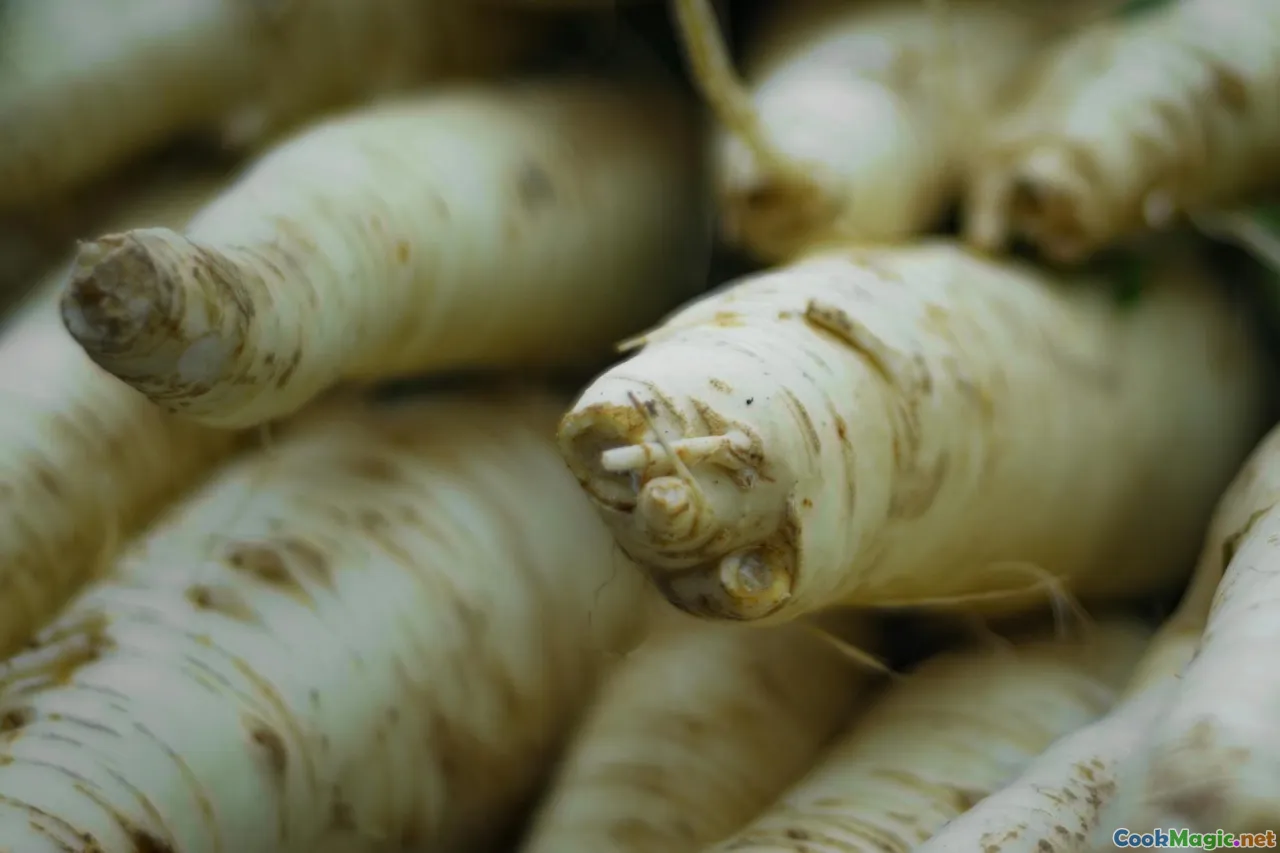Growing and Cooking with Dasheen in Island Cuisine
8 min read Discover the rich cultural history and vibrant flavors of dasheen in island cuisine, from cultivation to delicious traditional dishes. April 28, 2025 23:55
Growing and Cooking with Dasheen in Island Cuisine
Imagine walking through lush, verdant fields where the earth yields treasures that have nourished generations—a humble yet vital root called dasheen. For many Caribbean islands, especially Saint Vincent and the Grenadines, dasheen is more than just a staple; it’s a cultural emblem woven into the fabric of everyday life. Its versatility, rich flavor, and historical significance make it a fascinating subject for anyone passionate about island cuisine.
The Cultural and Historical Roots of Dasheen
Dasheen, known scientifically as Colocasia esculenta, has been cultivated for thousands of years across tropical regions. Its origins trace back to Southeast Asia and India, from where it journeyed across the Indian Ocean to Africa and ultimately into the Caribbean. For island communities like Saint Vincent, dasheen was a gift from the land—an essential crop that sustained families through hard times and festive seasons alike.
In Caribbean history, dasheen is intertwined with the legacy of enslaved peoples who brought their agricultural knowledge and culinary traditions from Africa. It became a cornerstone of local diets, transforming in flavor and form through centuries of adaptation. Today, its presence in island markets and homes reminds us of resilience, heritage, and the timeless relationship between land and community.
Growing Dasheen: From Soil to Harvest
Selecting the Right Varieties
There are several varieties of dasheen, each suited to different soil types and culinary uses. In Saint Vincent, the most common is the tannia, appreciated for its robustness and sweet, earthy flavor. When choosing dasheen for planting, look for firm, heavy tubers with smooth, unblemished skin. Avoid those with soft spots or sprouts, which indicate age or disease.
Cultivation Techniques
Growing dasheen requires patience and care. The plant thrives in rich, well-drained, slightly acidic soil. Farmers often plant tubers during the rainy season to ensure ample water supply. The process begins with planting sections of tuber, each with at least one eye, about 2-3 inches deep into the soil.
A critical aspect of cultivation is maintaining moisture levels; dasheen loves damp soil but hates waterlogging. Mulching helps retain soil moisture and suppress weeds. As the plant grows, it produces large, arrow-shaped leaves that provide a lush canopy, shielding the tubers from direct sunlight.
Harvesting and Post-Harvest Handling
Typically, dasheen is ready for harvest between 8 to 12 months. Farmers watch for signs like yellowing leaves and the size of the tuber—roughly the size of a football. Carefully, they dig around the plant to avoid damaging the tubers, which are often grouped in clusters.
Post-harvest, dasheen tubers need to be cleaned thoroughly, peeled, and stored in cool, humid conditions. Proper storage can extend shelf life, making it available for cooking over many months.
Culinary Uses of Dasheen in Island Cuisine
From Root to Plate: Flavor and Texture
Dasheen’s flavor is subtly earthy, with a hint of sweetness that deepens when cooked. Its texture varies from starchy and fluffy when boiled to creamy and smooth in purees. The versatility of dasheen makes it suitable for a variety of dishes, both savory and sweet.
Traditional Dishes Featuring Dasheen
1. Dasheen Pone
A beloved Caribbean snack, dasheen pone is a dense, sweet cake made from grated dasheen, coconut, sugar, and spices. The grated tuber is mixed with coconut milk and sugar, then baked until golden. The aroma of caramelized sugar and roasted coconut fills the air, evoking memories of family gatherings.
2. Dasheen Stew
A hearty, comforting dish where chunks of dasheen are simmered with saltfish, vegetables, and spices. The tubers absorb the flavors beautifully, becoming tender and flavorful. Served over rice, this stew is a staple on Sunday tables and festive occasions.
3. Mashed Dasheen
Similar to mashed potatoes but with a distinctly Caribbean twist, mashed dasheen is whipped until smooth with butter, garlic, and herbs. It’s a perfect side dish that complements spicy grilled meats or fresh seafood.
4. Dasheen Chips
Thinly sliced and fried until crisp, dasheen chips offer a delightful snack with a satisfying crunch and a hint of natural sweetness. They are often enjoyed with hot pepper sauce or tangy dips.
Modern and Fusion Creations
Innovative chefs in Saint Vincent and beyond are experimenting with dasheen in contemporary cuisine—think dasheen-infused soups, vegan burgers, and even desserts like dasheen ice cream. Its earthy flavor pairs well with tropical fruits, spicy seasonings, and aromatic herbs.
Personal Reflections and Cultural Significance
Growing up in Saint Vincent, dasheen was more than just a food; it was a symbol of resilience and community. I remember my grandmother’s gentle hands peeling the tuber for her famous dasheen pudding, the aroma filling our humble kitchen with warmth and anticipation. The act of planting dasheen in the soil felt like a sacred ritual—an act of hope that the land would nourish us once again.
In contemporary island life, dasheen continues to connect generations. Farmers take pride in cultivating this ancient crop, and families pass down recipes that highlight its versatility. Whether boiled, roasted, or mashed, dasheen remains a humble hero of Caribbean kitchens.
Conclusion: Embracing the Roots
In a world increasingly drawn to fast food and convenience, the cultivation and cooking of dasheen remind us of the enduring power of traditional agriculture and culinary practices. For island dwellers, it’s a link to their ancestors, a source of nourishment, and a symbol of cultural identity.
So next time you step into a Caribbean market and see those earthy, robust tubers, remember their journey—from soil to plate—and consider bringing a piece of the island’s rich heritage into your home. Whether you grow it yourself or savor it in a traditional dish, dasheen offers a taste of the land’s resilience, history, and soul.









